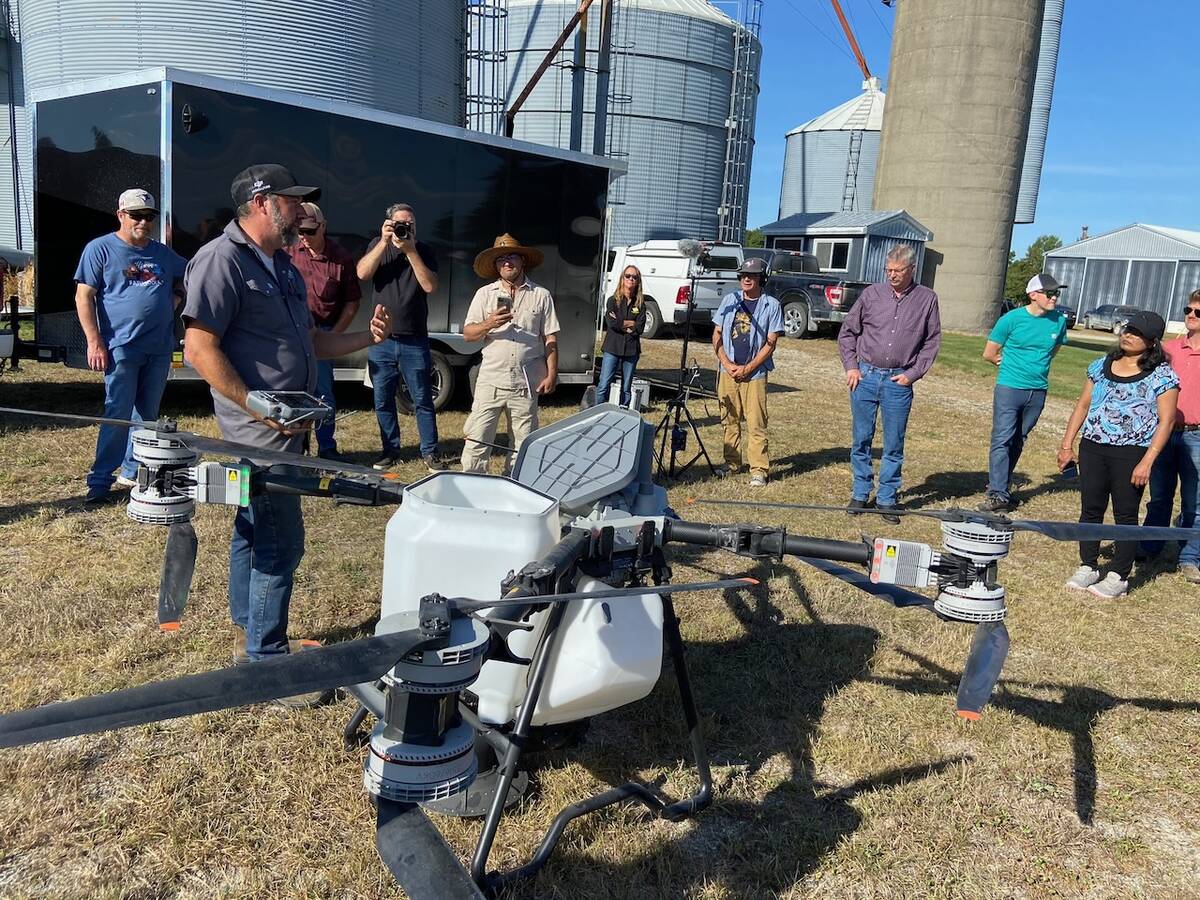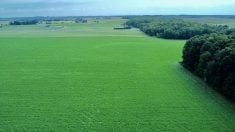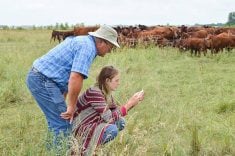Cover crops can provide benefits, but incorporating them into other cropping systems, especially when growing herbicide-tolerant crops including canola, can be a challenge.
That’s the topic of the latest research by Yvonne Lawley, an associate professor in the University of Manitoba plant science department. She was the key speaker at a July 25 online seminar on cover cropping strategies, hosted by the Manitoba Association of Watersheds.
Why it matters: Cover crops can enhance soil health, prevent erosion and reduce costs so it is necessary to identify the best crop types and herbicide practices to reap those benefits.
Read Also

Drones jumpstart cover crop planting
Drones are a tool that can help farmers with cover crop planting in still-growing corn and soybeans.
Lawley has been working with graduate student Janelle Gawiak and Bruce Cole of the University of Saskatchewan and Linda Corman of the University of Alberta to focus on canola herbicide tolerance systems, including Roundup, Liberty Link and Clearfield.
They have screened a mixture of cover crops, including four types of clover, with those herbicide options to see how they perform.
“In this project, we were able to get cover crops established (in 2022). And when we increased 40 plants per metre squared to 100, (we noticed) a proportional increase in cover crop establishment,” Lawley said.
The challenge turned to retaining that cover crop and that’s where different herbicide strategies came in. The team compared cover crops when sprayed with Liberty Link, Roundup and Clearfield to see which one did the most damage.
“Surprisingly, not Roundup, which I thought was going to kill them dead,” Lawley said. “It was Liberty, which is more of a common herbicide, which did the most damage.”
The team then studied weed pressure. The challenge was to find the “sweet spot” where weeds were controlled while keeping cover crops intact.
“We’ve got to find this Goldilocks treatment that balances the time and space for cover crops to grow with our cash crops,” Lawley said, and find a cover crop that can best withstand weed treatments.
The team saw plenty of weed growth at the start of the season, and not much difference was noticed with intercropping compared to the control treatment where no crops were grown.
In 2023, there was some damage to cover crops but more biomass. Roundup proved a better option than the Liberty system. Within the Clearfield system, differences in yields were largely caused by weeds, she said.
Another project undertaken by Lawley and PhD student Callum Morrison, along with technicians Codi Hennan and Stephanie Dheilly, is taking place at research sites in Glenlea and Carman, as well as Redvers, Sask., Saskatoon and Lethbridge, Alta. The study randomized a complete block design system where all crops were grown each year.
The project will evaluate cover crops in rotations across Manitoba, Saskatchewan and Alberta over four years. It will first assess the reliability of cover crop growth and growing environments across the Canadian Prairies.
It will also compare yields of crops grown with and without cover crops, given identical inputs, and will explore the agronomic, environmental and economic benefits and drawbacks of incorporating cover crops into rotations.
At the same time, it will investigate whether cover crops can enhance soil microbial activity, nitrogen cycling and soil carbon, reduce nitrogen emissions in the short to medium term, and evaluate whether the benefits of cover crops outweigh the costs of seed and establishment.
Crops in the rotation vary between study sites. The four-year rotation is conducted with and without cover crops, including wheat with clover, canola with a barley/pea mix, oat with rye, and soybean with brassica. The two-year short rotation, of wheat with canola, will serve as a reference for comparison. A four-year perennial rotation of alfalfa will be used as a reference for the other rotations.
Lawley has spent her career researching agronomy and cropping systems. Her work has focused on soybeans, corn and wheat, looking at a range of management practices that include residue management, strip tillage and cover crops.
















